Six Photography Tips To Become a Better Photographer
Here are six tips to help you improve your photos:
Tell a story
One of the things that separates a great photo from a mediocre one, is if the photo speaks to the viewer and tells a story. Your photos should tell the viewer something about the subject. When composing the photo, look to include elements that complement the main subject.
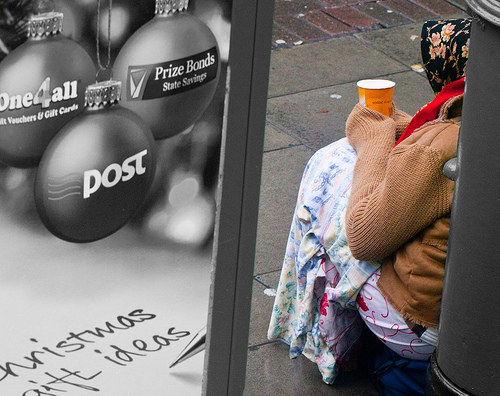
Christmas gift ideas by Steve-h on flickr (licensed CC-BY-SA)
With practice you'll be able to frame your photos so that subject and the rest of the image fit together to tell the story you envision.
You can also tell a story through a series of photos. Connecting together a sequence of images can heighten their emotional impact compared to a single image from a series standing by itself.
Get it right in-camera
Although you can use image editing software to correct mistakes made in camera, if you want to try and become a better photographer, get as much right in-camera as you can.
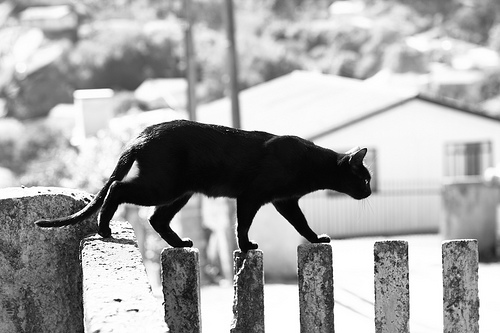
Cat walk by Claudio Matsuoka on flickr (licensed CC-BY)
If there's something you're including in your photo that doesn't add to it, try and remove it (either physically or by changing your framing) on location. It may be tempting to think "I'll just clone it out later in Photoshop". But that won't help improve your photography, and will probably take a lot longer than fixing the problem when you take the photo.
When you post-process your photos, ideally you want to be doing it to improve them, not fix them.
Bracket
Using exposure bracketing gives you a safety net when relying on your camera's exposure meter to guess the correct exposure for an image. It allows you to take one photo at the set exposure, one photo underexposed, and one overexposed.
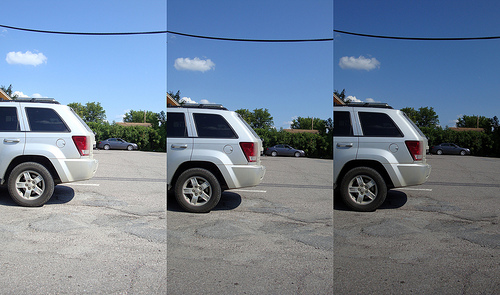
Car Bracketing Triptic by Andrew.Beebe on flickr (licensed CC-BY)
If the set exposure turned out to be dark, no problem as you can use the brighter photo. If the set exposure turned out too bright, you have the darker photo you can use. And if the set exposure was correct, well you have the photo taken with the set exposure as well.
Using exposure bracketing is a good idea if you don't have the time to check your shots, adjust exposure if it was wrong, and then take another shot. It can also be useful for shots where you won't get another chance (such as a moving subject). In this case though, be aware that as the subject is moving it will be a slightly different place in each of the bracketed shots.
Exposure bracketing can also be put to good use for High Dynamic Range (HDR) photography. This is useful for scenes where the range of light is too great for the camera to capture in one shot. By bracketing exposures and then blending them together, you end up with an image that retains details in both the highlights and shadows.
Practice regularly
Practice makes perfect
is the old saying. Maybe it doesn't quite make perfect, but practice certainly helps you improve.
As well as practicing, make sure you evaluate the photos you take to see where you went wrong, what you've done right, and what could be improved. If you just keep practicing without doing this, all that will happen is that you'll get really good at taking bad or mediocre photos.
You should always be looking to improve your photography. Don't rest on your laurels, but instead think "What could I have done to make this photo even better?"
Keep gear clean and ready for use
When you get your camera out to take a shot of something, you don't want to find the shot has been ruined by a dirty smear on the camera's lens. Nor do you want to spend a couple of minutes cleaning the lens, and miss the shot.
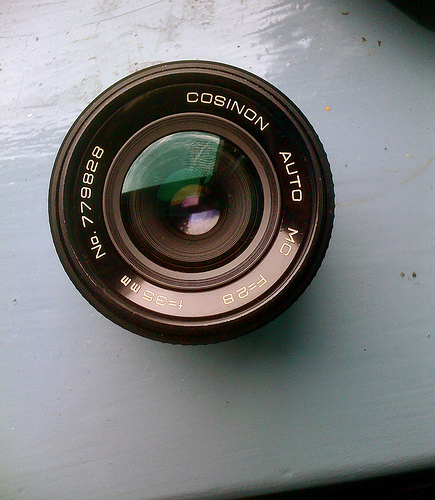
Nothing by Kevin Steinhardt on flickr (licensed CC-BY-SA)
Instead, make sure your photography gear is clean and working properly before you take it out to use it. If you shoot regularly, it is a good idea to clean everything when you've finished a photography session. This way you can just pick up your gear to take a photo anytime, and be sure that it is clean.
Things to think about are:
- Cleaning the front elements of lenses
- Making sure batteries are charged
- Memory cards are empty (and that you return the empty memory card to the camera)
- Filters and other accessories you use are clean and dust free
Copy others
Looking at the work of other photographers you admire can be a good way to improve your photography. Books, museums, and galleries provide a good way to see the work of established photographers. But don't forget the work of contemporary photographers, there are plenty of great photographers posting work right now to various photo sharing websites.
Look at their photos and ask yourself what sort of light was the photo taken in? Are they using any compositional rules / guidelines? Are they using a large or shallow depth of field? Depending on the subject matter, there will be many other questions you can ask yourself about their work as well.
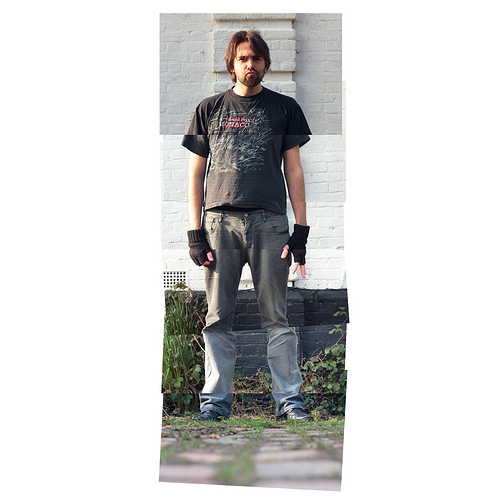
It's imitation, Holmes (#59/365) by Sebastian Anthony on flickr (licensed CC-BY-ND)
Now, take what you have learned, and try and emulate their work. You can even try shooting exactly the same subject in exactly the same style. While you should eventually develop your own style, copying other photographers can definitely help you improve your photography.
As well as learning how other photographers take their best shots, you also need to look at why they did things a certain way. Sometimes they might include notes with the photograph to explain. Other times you'll need to try re-creating the shot yourself and experimenting to find out.
For example, let's say you like the work of a photographer who shoots portrait photos with gray backgrounds. But you don't know why they choose gray backgrounds. Just try recreating the shot, with a gray background, and then with a different background. Look at the difference, and you can hopefully see why they chose a gray background. Or perhaps you actually prefer the shot with a different background? Experiment with the different variables, and you'll start to develop your own preferences and photographic style.
There is no special secret to becoming a great photographer, though some people do seem to have more of a natural talent than others. If you don't have a natural talent, it just means putting a bit more work and effort in. As you train yourself in seeing the world through a frame, you will get better at spotting what makes for a great photo.
Just keep on practicing, learning, and putting what you learn into practice, and you'll be on your way.




